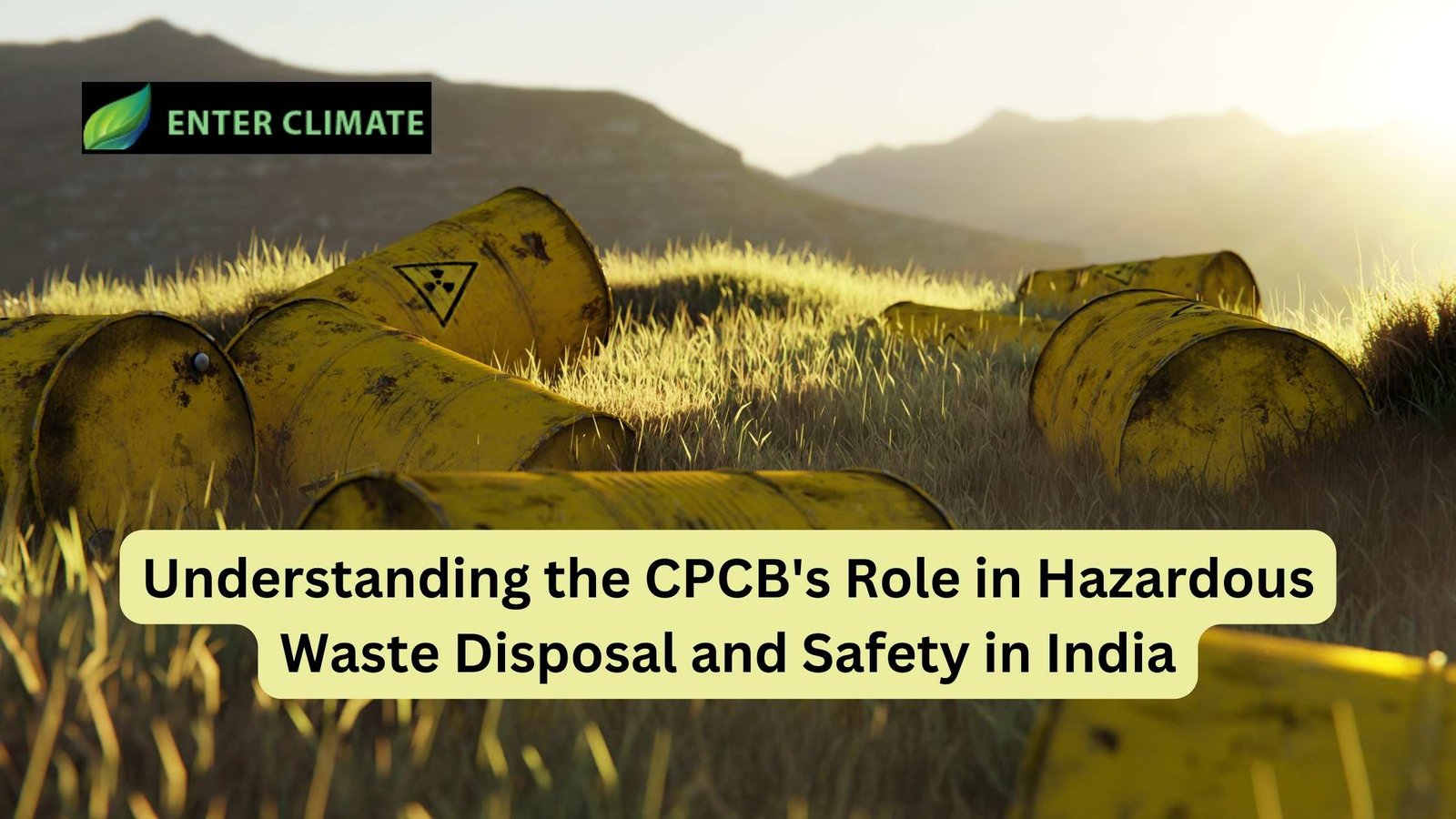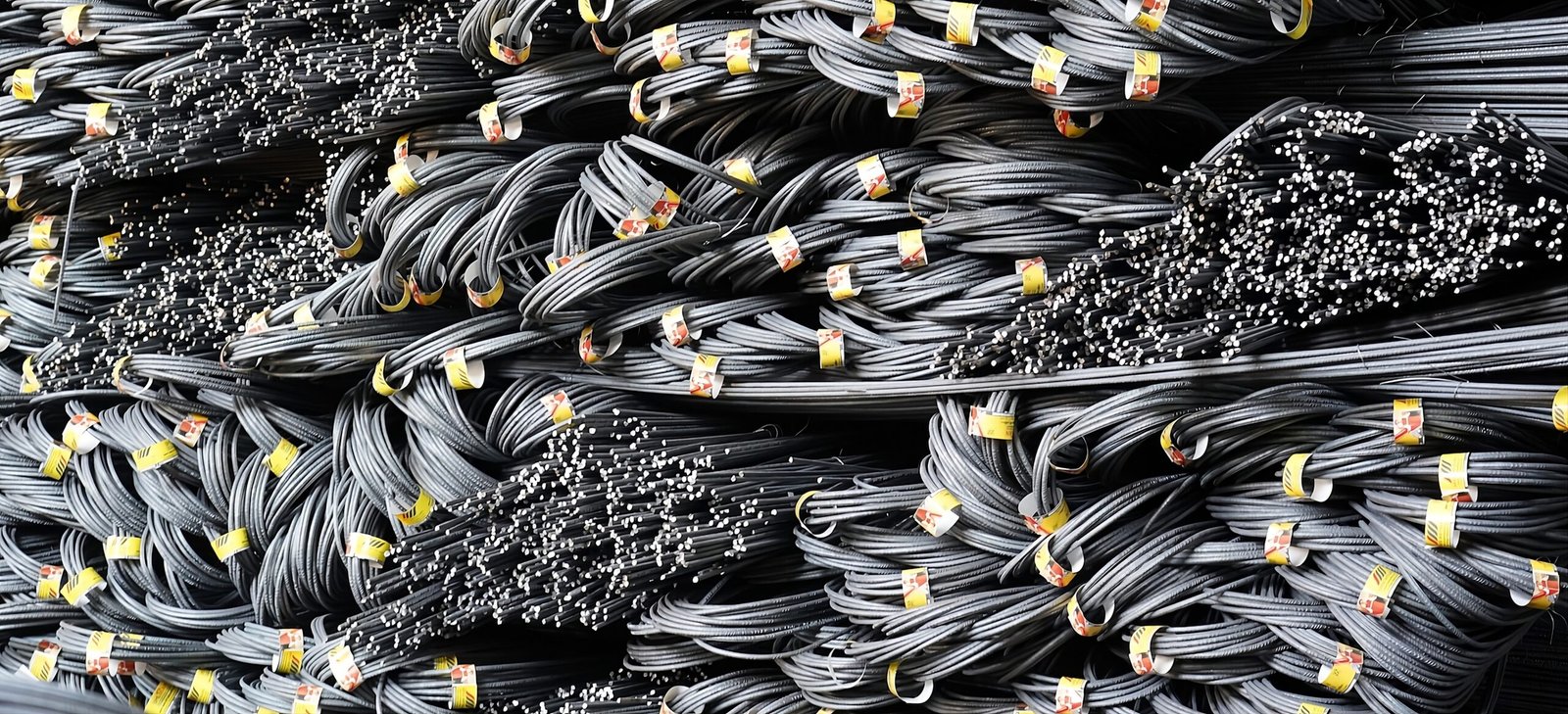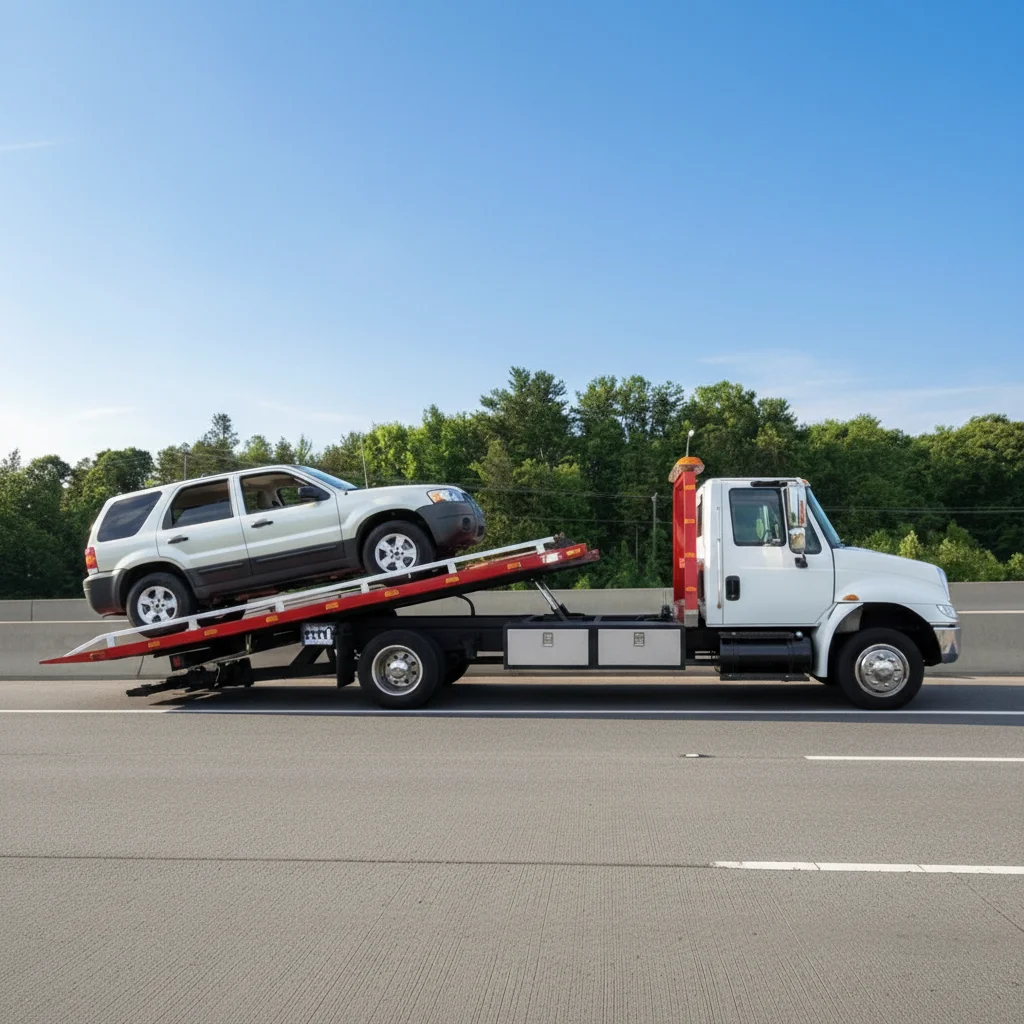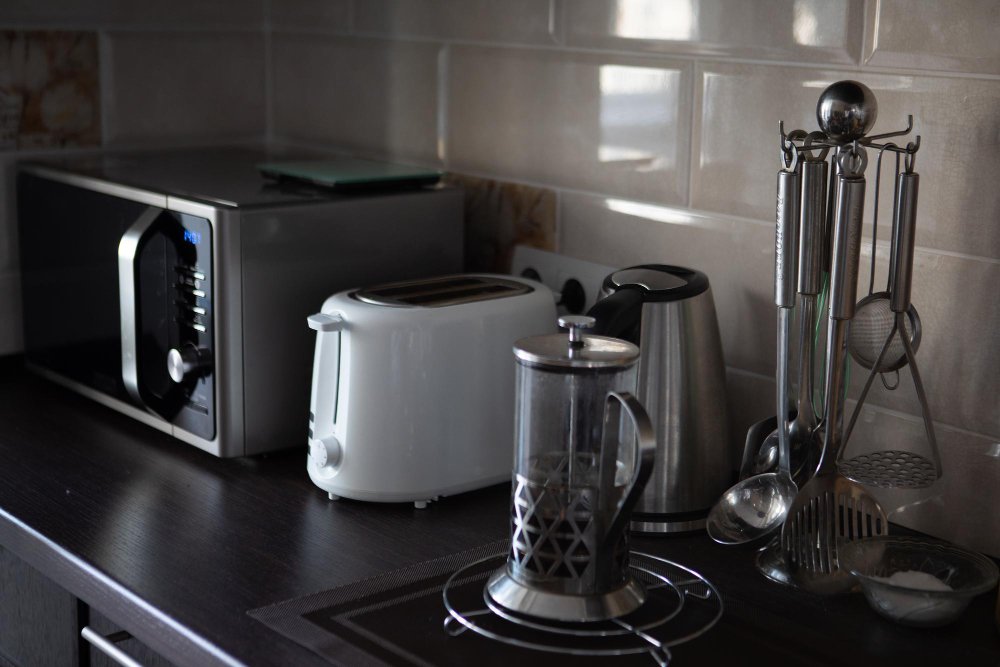In India, the management of hazardous waste is critical for both human health and environmental protection. With rapid industrial growth and increasing urbanization, hazardous waste disposal has become a significant challenge for businesses, municipalities, and government agencies. Improper handling of hazardous materials not only poses severe risks to the environment but also to public health.
This is where the Central Pollution Control Board (CPCB), a statutory organization under the Ministry of Environment, Forest, and Climate Change (MoEFCC), plays a pivotal role. The CPCB is responsible for setting guidelines, enforcing regulations, and ensuring that hazardous waste is disposed of safely, minimizing environmental damage.
In this blog, we will explore the CPCB’s role in hazardous waste management in India, how it regulates disposal processes, and the measures businesses need to take to ensure compliance with these crucial safety standards.
1. What is Hazardous Waste?
Before diving into the CPCB’s role, it is essential to understand what qualifies as hazardous waste. Hazardous waste refers to any waste that poses substantial or potential threats to public health or the environment. These wastes can be:
- Flammable (e.g., oils, solvents)
- Corrosive (e.g., acids, bases)
- Reactive (e.g., explosive chemicals)
- Toxic (e.g., heavy metals like mercury or lead)
In India, hazardous waste is governed under the Hazardous and Other Wastes (Management and Transboundary Movement) Rules, 2016, which classifies waste into different categories based on its chemical composition, origin, and potential environmental impact.
2. The Role of the CPCB in Hazardous Waste Management
The Central Pollution Control Board (CPCB) is the central body responsible for regulating pollution control and waste management in India. It operates under the Ministry of Environment, Forests, and Climate Change (MoEFCC) and plays an integral role in hazardous waste management.
A. Setting Guidelines and Standards
One of the primary functions of the CPCB is to develop and enforce standards for the treatment, storage, and disposal of hazardous waste. These standards are designed to ensure that hazardous materials are handled in a manner that minimizes environmental harm. The CPCB provides comprehensive guidelines on how industries should manage hazardous waste, including:
- Labeling and classification of hazardous waste.
- Storage and transportation requirements.
- Treatment methods for different types of waste.
- Disposal procedures to ensure safe final disposal.
B. Enforcing Regulations
The CPCB’s enforcement role involves monitoring industries and ensuring compliance with hazardous waste management regulations. They carry out periodic inspections and audits to verify that businesses are adhering to the safety standards and properly disposing of hazardous materials. In cases of non-compliance, the CPCB can issue fines or take legal action.
The board works in coordination with State Pollution Control Boards (SPCBs) to ensure local-level compliance, especially for smaller businesses and industries that may not be fully aware of their obligations.
C. Promoting Awareness and Capacity Building
In addition to enforcing regulations, the CPCB plays a key role in raising awareness about hazardous waste management. It conducts workshops, training sessions, and awareness campaigns to educate industries, local governments, and communities about the proper disposal of hazardous waste. The board also collaborates with stakeholders to build the capacity of waste management infrastructure across the country.
D. Facilitating Safe Disposal and Treatment Solutions
The CPCB not only lays down the rules but also supports industries in developing safe waste treatment technologies. It has partnered with various organizations to create efficient disposal solutions like incinerators, secured landfills, and recycling plants that comply with global environmental standards. The CPCB works to ensure that these facilities are available for businesses to safely dispose of hazardous waste without harming the environment.
3. CPCB Guidelines for Hazardous Waste Disposal and Safety
The CPCB’s guidelines for hazardous waste disposal are comprehensive and focus on ensuring that hazardous materials do not harm public health or the environment. These guidelines include:
A. Waste Segregation
Before disposing of hazardous waste, it must first be segregated into different categories based on its characteristics (e.g., solid, liquid, or gaseous). Proper segregation reduces the risk of contamination during storage, transportation, and disposal.
B. Proper Storage and Labeling
Hazardous waste must be stored in secure containers that prevent leakage or exposure to the environment. The CPCB mandates that all containers be clearly labeled with the contents, ensuring that workers and waste handlers are aware of the risks associated with the materials. Storage areas should also be designed to prevent spills and contain any potential leaks.
C. Recycling and Resource Recovery
The CPCB encourages the recycling of hazardous waste materials whenever possible. This not only conserves resources but also reduces the need for landfill space. Certain types of hazardous waste, such as industrial solvents or electronic waste, can be recycled or reused, contributing to a circular economy.
D. Safe Transportation
Transporting hazardous waste is a high-risk activity that requires strict adherence to guidelines. The CPCB’s guidelines stipulate that vehicles transporting hazardous waste must be equipped with proper containment systems and that transporters must hold valid licenses. Additionally, routes and timing for transport should be planned to minimize exposure to densely populated areas.
E. Disposal Methods
The CPCB’s guidelines outline various disposal methods depending on the type of hazardous waste. Common disposal options include:
- Incineration for materials that can be safely burned without harmful emissions.
- Landfill disposal for non-recyclable hazardous waste in specially designed landfills that prevent leakage.
- Chemical treatment for hazardous liquids or gases that can be neutralized through chemical processes.
4. Challenges in Hazardous Waste Management in India
While the CPCB plays a critical role in hazardous waste management, India still faces significant challenges in this area:
- Lack of Awareness: Many small businesses and industries are unaware of the regulations or the risks associated with improper waste disposal.
- Insufficient Infrastructure: The country’s infrastructure for hazardous waste management is still developing, and there is a need for more treatment and disposal facilities, especially in rural areas.
- Regulatory Gaps: While regulations exist, enforcement can be inconsistent, and some industries evade compliance due to a lack of monitoring and penalties.
The CPCB is working diligently to address these challenges by enhancing enforcement, providing support to industries, and promoting sustainable waste management practices.
5. What Businesses Can Do to Ensure Compliance
To avoid legal consequences and contribute to a cleaner environment, businesses must actively ensure compliance with CPCB regulations. Here are a few steps businesses can take:
- Conduct Regular Waste Audits: Businesses should regularly assess the types and amounts of hazardous waste they generate.
- Invest in Proper Waste Disposal Technologies: Use authorized treatment, storage, and disposal facilities approved by the CPCB.
- Train Employees: Ensure that all employees involved in hazardous waste handling receive proper training on safety standards and regulations.
- Stay Updated on Regulations: Stay informed about the latest CPCB guidelines and regulations concerning hazardous waste.
Conclusion: The Future of Hazardous Waste Management in India
The CPCB plays an essential role in shaping the future of hazardous waste management in India. Through stringent guidelines, enforcement, and awareness-building initiatives, the board ensures that hazardous materials are handled in a way that protects public health and the environment. As India continues to grow and industrialize, it is crucial that businesses, municipalities, and government agencies work together to implement effective hazardous waste management practices that are safe, sustainable, and compliant with regulations.
FAQs
1. What types of waste are considered hazardous in India?
Hazardous waste in India includes materials that are toxic, corrosive, flammable, or reactive. Examples include industrial solvents, chemicals, oils, pesticides, and certain types of electronic waste.
2. How can businesses ensure compliance with CPCB guidelines?
Businesses can ensure compliance by conducting regular waste audits, using authorized disposal methods, training employees, and staying updated with the latest CPCB regulations.
3. What penalties do businesses face for improper hazardous waste disposal in India?
Businesses that fail to comply with hazardous waste management regulations may face penalties, fines, or even closure of operations. Serious violations can also lead to legal action.











Leave a Reply